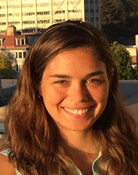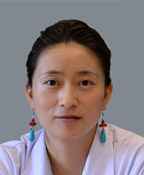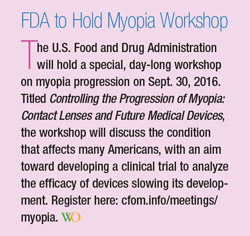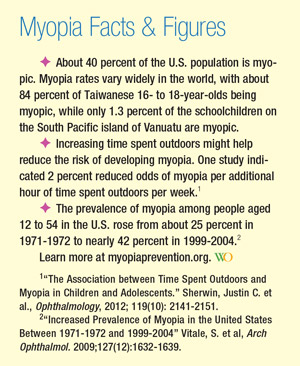

At the University of California Berkeley School of Optometry, there’s a specialty clinic dedicated to myopia control. Sarah Kochik, OD, FAAO, is a clinical instructor, and Maria Liu, OD, PhD, MBA, MPH, FAAO, is assistant professor of clinical optometry and serves as the chief and founder of the Myopia Control Clinic. One of the goals of the clinic is to bring the research into practice. “We use only evidence-based treatments, which have been shown to be effective through many clinical trials in controlling the progression of myopia,” says Dr. Kochik. As trained researchers and clinicians, they are working to incorporate the research findings from studies into clinical practice.


What makes the center’s offerings fundamentally different from most ODs’—even those who are prescribing similar treatments—is that it begins the treatment more proactively, says Dr. Liu. “The first patient visit is a myopia control consultation visit. We collect comprehensive information, including refractive error change, how the patients use their eyes, the rate of the progression and the parental myopia history. We also collect testing to help us understand whether these patients are good candidates for one or more of the treatment options we provide, based on the refractive error and anatomical factors.” In other words, there’s an objective and
subjective part of the assessment.
The next step is a thorough discussion with the parent and patient so that they understand what is known about the progression of myopia, the pros and cons of treatment, the limitations and the costs. The most common treatments through the clinic are orthokeratology, multifocal contact lenses and a low concentration of atropine, which seems to be effective especially during the
rapid-growth years. However, because it makes children more light-sensitive, it might limit or discourage them from outdoor activities, which also have a direct benefit on visual stimulation.


“Myopia control management is a long-term commitment, so the families really need to think it through,” says Dr. Kochik. “This is very different from seeing a patient one time for inflammation, although, in our opinion, it’s not as time-intensive as something like vision therapy.” Once the initial treatment path has been determined and the child understands the follow-up procedures and the care of the lenses, the frequency of the visits tapers.
The youngest patient they have seen started when he was just 4 ½ years old. “Both parents were highly motivated to get him in contact lenses,” Dr. Liu recalls. Generally, children are a little older when they come into the program. Although the clinic is not part of the pediatric or primary care clinics, there are a lot of referrals from those clinics. “A rotation through our clinic is part of a pediatric residency,” Dr. Kochik says. Dr. Liu adds that about half of the clinic’s patients are internal referrals from pediatric or primary care clinics and the other half are either self-referred or referred by a practitioner in the area.


Both doctors say that ideally, those referral sources would feel confident treating these children. “There’s a huge need for this treatment, and we’d like to see the practitioners in the area incorporate it,” says Dr. Kochik. To aid that goal, the two have offered to provide free CE to practitioners in the Bay Area and have conducted several such sessions. “We’re not competing with each other in this area,” says Dr. Liu. “The prevalence of myopia is so huge. We’d want to see that these children not only have clearer vision at the
moment, but we’d like to see them monitored in some systematic way.”
They say that education and communication to parents and ODs alike should emphasize that myopia progression is a condition that goes beyond minor refractive correction. “When kids are first seen in the clinic and they’re just becoming nearsighted or losing their hyperopic buffer, we start talking to parents,” says Dr. Kochik. “When they return the next year and are showing 1.00D or 1.50D change in nearsightedness, delivering that message again is really important. Sometimes, on hearing it a second time, the impact is really different.”
The challenge is that in a busy nonacademic setting, the doctor and staff may not have time to emphasize the early education. “Many practitioners are seeing those kids when they’re already at -3.00D or more.”



